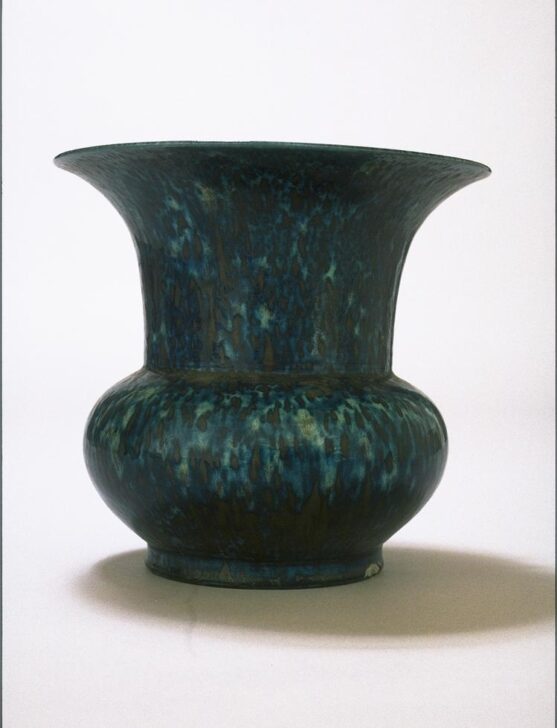Residue Jar
Chinese

Description
Subject Matter:
A zha dou (渣斗) residue jar from the Shiwan (石湾) kilns of the Ming dynasty (1368-1644).
This jar form, a zha dou (渣斗) "residue jar," or bone collecting pot, is based off of a spitoon and was common table-ware from the Song dynasty (960-1279) through the Qing dynasty (1644-1911). It is from the Shiwan kilns in Foshan, which were active from the Song to the Ming dynasties and specialized in lustrous mottled, flambe, and crystalline blue, red-purple, and black glazes.
Physical Description:
A stoneware vessel form with a squat, wide globular body narrowing slightly for a tall, wide flaring trumpet neck on a footring. It is covered in a dark blue mottled glaze.
Usage Rights:
If you are interested in using an image for a publication, please visit https://umma.umich.edu/request-image/ for more information and to fill out the online Image Rights and Reproductions Request Form.